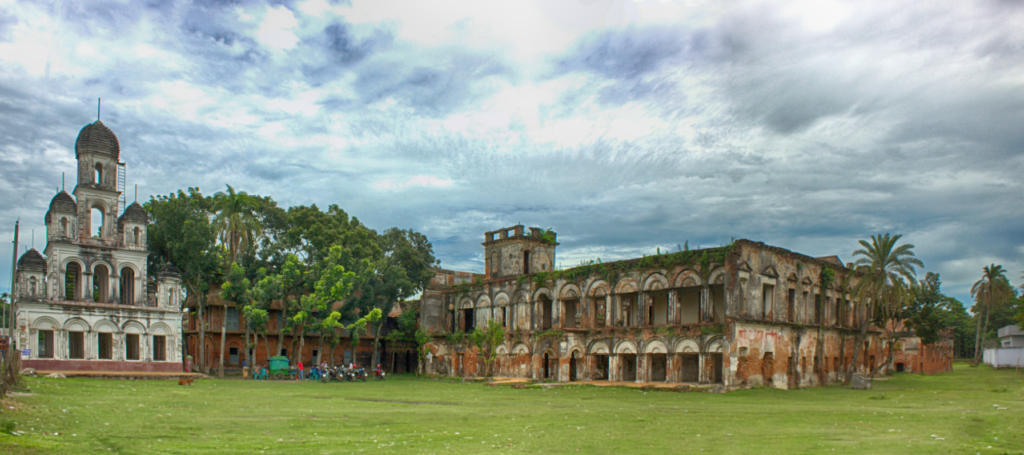Manikganj, a picturesque district in central Bangladesh, is a treasure trove of history, culture, and natural splendor. Located just 60 kilometers from Dhaka, Manikganj offers a tranquil escape into the heart of rural Bengal. Known for its historic zamindar mansions, serene riverscapes, and vibrant cultural festivals, the district is an enchanting blend of tradition and progress.
A Historical Overview
Manikganj’s history is steeped in the legacy of ancient Bengal, colonial struggles, and the Liberation War of 1971. The region was historically a trade hub, thanks to its position near the Jamuna, Padma, and Dhaleshwari rivers.
- Battle of Baliati: A significant event during the Sepoy Mutiny of 1857, marking Manikganj’s role in resisting colonial forces.
- Liberation War Contributions: During the 1971 Liberation War, Manikganj witnessed fierce battles. The contributions of local freedom fighters are commemorated through numerous war memorials spread across the district.
Top Attractions in Manikganj
1. Baliati Zamindar Bari

Arguably the most iconic landmark of Manikganj, Baliati Zamindar Bari is a sprawling 19th-century palace complex. Built by the Baliati family, the mansion features seven distinct sections adorned with Corinthian columns, expansive courtyards, and intricate carvings. It’s a perfect destination for history buffs and architectural enthusiasts.
2. Teota Zamindar Bari

The Teota Zamindar Bari stands as another testament to the region’s aristocratic past. Nestled by the Jamuna River, this mansion is a serene escape, surrounded by lush greenery and the soothing sounds of flowing water.
3. Padma and Jamuna Riverbanks
The riverbanks of Padma and Jamuna offer breathtaking views, especially at sunrise and sunset. These serene spots are ideal for picnics, boat rides, and capturing the essence of Bengal’s riverine beauty.
4. Jafarganj Bridge
An architectural relic from the British era, Jafarganj Bridge showcases the engineering prowess of its time. The bridge is both a historical site and a favorite spot for photography.
5. Liberation War Memorials
Memorials scattered throughout Manikganj pay homage to the bravery and sacrifices of local heroes who fought valiantly during the 1971 Liberation War. These sites evoke a sense of pride and solemnity among visitors.
Notable Figures of Manikganj
Manikganj has produced some of Bangladesh’s most revered personalities:
- Shohid Rafiq Uddin Ahmed: A martyr of the 1952 Language Movement, Rafiq’s contributions are deeply ingrained in the nation’s history.
- Zainul Abedin: The legendary artist, known as the “Father of Modern Art in Bangladesh,” hailed from Manikganj. His iconic famine sketches and depictions of rural Bengal resonate deeply with art lovers worldwide.
Cultural Festivities
Manikganj is a vibrant cultural hub where traditions are celebrated with fervor.
- Nouka Baich (Boat Races): Held annually on the rivers, these boat races are thrilling spectacles that attract participants and spectators from across the region.
- Baul Music Gatherings: The district frequently hosts Baul music festivals, showcasing the mystic philosophy and soulful melodies of Baul traditions.
- Harvest Festivals: During the harvest season, the district comes alive with fairs, music, and community feasts.
Economic and Agricultural Highlights
Agriculture forms the backbone of Manikganj’s economy.
- Primary Crops: Rice, jute, and mustard dominate the district’s agricultural landscape, thanks to the fertile alluvial soil.
- Fishing: The Padma and Jamuna rivers support a thriving fishing industry, providing a livelihood to many local families.
- Handicrafts: Traditional industries like pottery, weaving, and brassware continue to flourish, preserving the district’s artisanal heritage.
Culinary Delights of Manikganj
Manikganj offers a taste of authentic Bangladeshi cuisine:
- Fresh Hilsa (Ilish): Caught from the Padma River, Hilsa dishes are a must-try for visitors.
- Pithas (Rice Cakes): Popular during winter, these traditional treats include varieties like bhapa pitha and patishapta.
- Local Sweets: Manikganj is known for its unique sweets made from jaggery and fresh milk.
Administrative Structure
The district is divided into seven upazilas, each contributing to its unique identity:
- Manikganj Sadar: The administrative and cultural hub, home to major landmarks and bustling markets.
- Shibalaya: Famous for its boat races and scenic river views.
- Saturia: Known for its peaceful rural landscapes and historical significance.
- Harirampur: A serene area offering natural beauty and traditional village life.
- Ghior: Renowned for its handloom weaving and pottery.
- Singair: A growing center of trade and small-scale industries.
- Daulatpur: A tranquil area enriched with natural beauty and agricultural productivity.
Why Visit Manikganj?
Manikganj is more than just a destination—it’s an experience. From the grandeur of its historic zamindar mansions to the tranquility of its riverbanks and the vibrancy of its cultural festivals, the district captures the essence of Bengal in its purest form. Whether you are a history enthusiast, nature lover, or cultural explorer, Manikganj promises a journey filled with discovery and delight.
Plan Your Trip
Explore the timeless charm of Manikganj and let its history, culture, and natural beauty leave an indelible mark on your soul. From the whispers of the Jamuna River to the echoes of Baul melodies, Manikganj is a district that invites you to reconnect with the roots of Bangladesh.




